

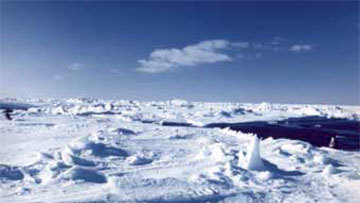


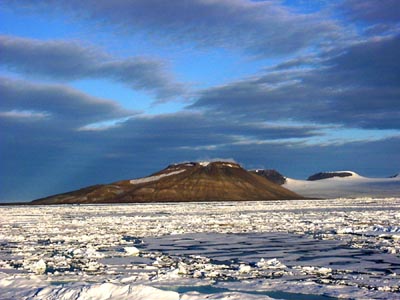

December 31, Barents 2010 News Review
It has been an exciting year for the Barents Region. The cross-border cooperation is flourishing and the outside world’s attention to the northernmost part of Europe is increasing.
|
|---|
December 30, Report from the ISAR Mentor Panel in Japan
The International Symposium on Arctic Research is the flagship Arctic science meeting in Japan organized by the Japanese National Institute of Polar Research, the Japan Agency for Marine-Earth Science and Technology, Japan Aerospace Exploration Agency and International Arctic Research Center at the University of Alaska - Fairbanks. The second symposium took place 7-9 December in Tokyo, while the first one took place two years ago. The third symposium is expected to take place late 2012. About 240 scientists and students participated with slightly more Japanese than foreigners. The symposium is thus on its way to become a major international Arctic meeting.
|
December 30, APECS/PYRN AGU Fall Meeting Workshop Report
On 12 December 2010, the day before the 2010 AGU Fall Meeting, 16 early career scientists participated in a career development workshop sponsored by the University of Alaska, the International Arctic Research Center, Arctic Research Consortium of the US (ARCUS), APECS, and the Permafrost Young Researchers Network (PYRN). Seven mentors spent much of the day working with workshop participants, covering information about how to succeed in academic and research careers, outreach methods in proposal writing, and how to communicate polar research to various audiences. The mentors received great reviews from the participants, citing their knowledge and enthusiasm as one of the greatest parts of the workshop. Overall, participants were pleased with the workshop and felt that they would be very likely to use the information they learned in the future.
|
December 29, UNIS part of new center for research-based innovation
The Research Council of Norway has awarded 10 million NOK annually over the next eight years to a new center for research-based innovation which is headed by NTNU and where UNIS is a vital partner. – This center will make UNIS a stronger scientific node in an area that is vital for the future business development in the Barents Sea, says UNIS director Gunnar Sand.
|
December 29, Russia to build 10 emergency services centers in the Arctic
The Russian emergencies ministry is planning to build ten centers to monitor the operation and safety of oil and gas pipelines on the Arctic coast.
|
December 28, What does a blizzard on the U.S. East Coast mean for global warming?
In fact, while no single storm is anything more than weather, stronger winter storms are exactly what climate scientists expect from a warming climate. How can that be? Simple. Warmer air allows for more water vapor, the key constituent of snow (which accords with the folk wisdom from my home state, where when the temperature got really brisk and the sky was leaden, people would observe: "Too cold to snow.")
|
December 28, Decline of West Coast Fog Brought Higher Coastal Temperatures Last 60 Years
Fog is a common feature along the West Coast during the summer, but a University of Washington scientist has found that summertime coastal fog has declined since 1950 while coastal temperatures have increased slightly.
|
December 27, Cryosat ice mission returns first science
The Cryosat-2 spacecraft has produced its first major science result.
Radar data from the European satellite has been used to make a map of ocean circulation across the Arctic basin. Cryosat's primary mission is to measure sea-ice thickness, which has been in sharp decline in recent decades. But its ability also to map the shape of the sea surface will tell scientists if Arctic currents are changing as a result of winds being allowed to blow more easily on ice-free waters. |
December 27, Why is the north magnetic pole racing toward Siberia?
Finding Santa Claus's home at the North Pole is easy on a globe—just look for the point on top where all the lines of longitude meet. But that is just the "geographic" North Pole; there are several other definitions for the poles, all useful in different scientific or navigational contexts. Among the many north poles, let us rejoice that Santa Claus did not choose the magnetic pole for his home, for he would have to spend as much time moving as delivering presents.
|
December 23, New research vessels and satellite connection for Russian Arctic
A fleet of new research vessels and the establishment of a Russian Arctic satellite system are on top of the wishing-list of Leonid Vasiliev, leader of the Arkhangelsk-based Northern Service on Hydrometeorology and Environmental Monitoring.
|
December 23, Global Rivers Emit Three Times IPCC Estimates of Greenhouse Gas Nitrous Oxide
What goes in must come out, a truism that now may be applied to global river networks. Human-caused nitrogen loading to river networks is a potentially important source of nitrous oxide emission to the atmosphere. Nitrous oxide is a potent greenhouse gas that contributes to climate change and stratospheric ozone destruction.
|
December 22, CryoSat-2 Data Used to Make First Complete Map of Ocean Dynamic Topography in Arctic
ESA’s CryoSat-2 satellite, which was launched in April 2010, has produced the first complete picture of ocean dynamic topography in the Arctic Ocean – its first major scientific accomplishment – according to presentation at the American Geophysical Union (AGU) Fall Meeting. While the primary mission of the satellite is to measure sea-ice thickness, its ability to map the shape of the sea surface allows scientists to determine whether Arctic currents are changing as a result of winds blowing more freely on ice-free waters.
|
December 21, NSF's Nathaniel B. Palmer Sails with Sweden's Oden to Study Antarctic Peninsula Ecosystem
In a unique and complex example of "science diplomacy," teams of U.S. and Swedish scientists are sailing this month aboard two research vessels to study the ecology of the Amundsen Sea, one of the least-explored and most productive bodies in Antarctic waters, and to gauge the potential effects of a changing climate on the Southern Ocean.
The joint American and Swedish expedition, involving the U.S. icebreaking research vessel Nathaniel B. Palmer and the Swedish icebreaker Oden, was cooperatively planned and is being carried out by the National Science Foundation's Office of Polar Programs and the Swedish Polar Research Secretariat (SPRS). |
December 20, Climate progress doesn't only come at summits
It’s easy to be disheartened by the failure at Cancun to take major steps toward an international agreement on fighting climate change. Despite apparent consensus on the threat that global warming poses and the need for urgent action, short-term national interest is still being put before the long-term collective good.
|
December 20, High Temperature in the North – Cold in the south
During November and the beginning of December, there has been unusual weather phenomenon over Greenland and Iceland causing unusual high temperature in the area. It is reported on the 29th of November that in the capital of Greenland, Nuuk, that the temperature was as high as 16° C (61°). According to the Danish Meteorological office, the mean temperature in November 2010 in Nuuk was 1,6° C (36° F), while the annual mean temperature in November is -3,7°C (25° F). So far in December, the mean temperature has been 1° C (34° F), which is seven degrees over the annual mean temperature, which is -6,2°C (21° F).
|
December 17, New Cooperation Agreement on Search and Rescue in the Arctic
Member states of the Arctic Council, Canada, Denmark on behalf f the Faroe islands and Greenland, Finland, Iceland, Norway, Sweden, Russia and The US have finished drafting a cooperation agreement on search and rescue in the Arctic in a meeting held in Reykjavik 14.-16. December. In addition to state representatives, around 50 academics and experts from the respective states and International Civil Aviation Organization participated in the meeting, which is a final part of a year long work process.
|
December 17, Loss of Arctic Ice May Promote Hybrid Marine Mammals
Scientists have expected for some time that the Arctic Ocean will be ice-free in summer by the end of this century. Writing in the December 15 issue of the journal Nature, a trio of researchers say the seasonal loss of this ice sheet, a continent-sized natural barrier between species such as bears, whales and seals, could mean extinction of some rare marine mammals and the loss of many adaptive gene combinations.
|
December 16, Arctic Shelf Research Missions Continue
As the flagship of the Russian polar fleet, the Akademik Fyodorov, returns from a research expedition in the Arctic Ocean aimed at finding evidence that areas of the continental Arctic shelf belong to Russia, governments continue to dispute the issue, mediated by the UN.
The debate over the Arctic continental shelf gained momentum this year, with Russia, Canada, the U.S., Denmark and Norway all vying for a piece of the oil in the Arctic. |
December 16, Ancient Forest Emerges Mummified from the Arctic: Clues to Future Warming Impact
The northernmost mummified forest ever found in Canada is revealing how plants struggled to endure a long-ago global cooling.
Researchers believe the trees -- buried by a landslide and exquisitely preserved 2 to 8 million years ago -- will help them predict how today's Arctic will respond to global warming. |
December 15, Russia to hold annual Arctic Forums
Arkhangelsk is suggested to host the next year’s Arctic Forum.
Prime Minister Vladimir Putin announced on Saturday that Arctic Forums will be hold annually. The Prime Minister said to RIA Novosti that Russia wants to continue an open discussion of key Arctic problems, including nature protection and climate changes. |
December 15, Bering Sea Was Ice-Free and Full of Life During Last Warm Period, Study Finds
Deep sediment cores retrieved from the Bering Sea floor indicate that the region was ice-free all year and biological productivity was high during the last major warm period in Earth's climate history.
|
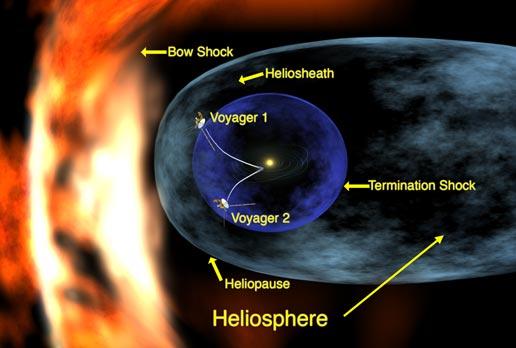 |
December 14, NASA Probe Sees Solar Wind Decline En Route to Interstellar Space
The 33-year odyssey of NASA's Voyager 1 spacecraft has reached a distant point at the edge of our solar system where there is no outward motion of solar wind.
Now hurtling toward interstellar space some 10.8 billion miles from the sun, Voyager 1 has crossed into an area where the velocity of the hot ionized gas, or plasma, emanating directly outward from the sun has slowed to zero. Scientists suspect the solar wind has been turned sideways by the pressure from the interstellar wind in the region between stars. |
December 14, Continental shelf survey to continue next summer
Russia will also next summer send out its Arctic research vessel “Akademik Fyodorov” to collect geological shelf data.
- Once the additional research is done, and consultations with circumpolar nations are held, Russia will lodge its application with the UN Commission on the Limits of the Continental Shelf, said Arthur Chilinarov this Sunday. |
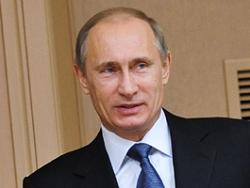 |
December 13, Putin signs resolution to develop new nationl park Russian Arctica
Russian Prime Minister Vladimir Putin has signed a resolution to set up a special structure to develop the new national park Russian Arctica. The premier said about it at the 14th congress of the Russian Geographic Society.
The work of the structure will be aimed at preservation of unique natural complexes, ecological education of citizens and organisation of conditions for civilised tourism, Putin said.
|
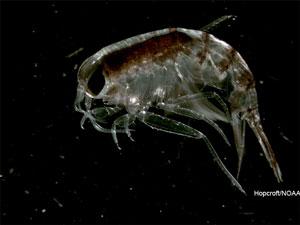 |
December 13, Bering Sea Chill Yields Fatter Plankton, Pollock Diet Changes
Despite a 30-year warming trend, the last three years in the Bering Sea have been the coldest on record. A University of Alaska Fairbanks scientist says that the cold temperatures have helped produce larger zooplankton in the Bering Sea, which may be changing the way Walleye pollock are feeding.
|
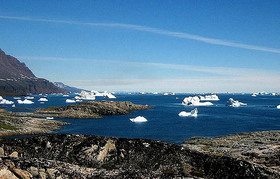 |
December 10, Global warming benefits 'outweigh' negatives
Global warming in the next 40 years will allow Russian authorities to save on central heating, increase agricultural production and extend sea navigation in the north, a leading Russian climatologist told a Russian-German conference Wednesday.
|
December 10, Sea ice action on coastal infrastructures
Ph.D. candidate Fabrice Caline built a 50 meter long breakwater in Svea to study the action of sea ice on coastal infrastructures. Caline will defend his Ph.D. thesis on December 10 at UNIS.Ph.D. candidate Fabrice Caline built a 50 meter long breakwater in Svea to study the action of sea ice on coastal infrastructures. Caline will defend his Ph.D. thesis on December 10 at UNIS.
The background for Caline’s Ph.D. project is that the Store Norske mining company wants to open a new coal mine in Ispallen, close to the existing mining community Svea, Svalbard. The coal from this mine will need to be transported across a tidal inlet, Sveasundet, which is covered by sea ice several months of the year.
|
December 9,
Slow ice growth leads to low November ice extent
Arctic sea ice grew more slowly than average in November, leading to the second-lowest ice extent for the month. At the end of November, Hudson Bay was still nearly ice-free.
Arctic sea ice extent averaged over November 2010 was 9.89 million square kilometers (3.82 million square miles). |
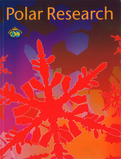 |
December 8, Free access to polar research
Polar Research, the respected international peer-reviewed journal of the Norwegian Polar Institute, will become an open-access journal starting January 1st 2011. Now readers around the world will have free access to the latest scientific articles on climate, biodiversity, polar history and other diverse topics that are investigated in the polar regions.
|
December 8, IPY International Early Career Researcher Symposium - Videos
A Career Development workshop sponsored to bring early career Arctic and Antarctic researchers together for a series of career development training sessions to develop professional skill, work with senior mentors, and develop international and interdisciplinary collaborations was held 4-8 December 2009, in Victoria, B.C.
|
December 7, Antarctic ozone hole: smallest in five years
Analysis from NIWA’s ozone research shows that the Antarctic ozone hole is smaller this year than any of the previous five years. Calculations made by combining satellite data with ground-based measurements, including the Antarctica New Zealand Arrival …NIWA Media ReleaseAnalysis from NIWA’s ozone research shows that the Antarctic ozone hole is smaller this year than any of the previous five years. Calculations made by combining satellite data with ground-based measurements, including the Antarctica New Zealand Arrival …NIWA Media Release
|
December 7, Leaking Arctic Ice Raises a Tricky Climate Issue
CHERSKY, Sakha Republic — The scientist shuffles across the frozen lake, scuffing aside ankle-deep snow until he finds a cluster of bubbles trapped under the ice. With a cigarette lighter in one hand and a knife in the other, he lances the ice like a blister. Methane whooshes out and bursts into a thin blue flame.
|
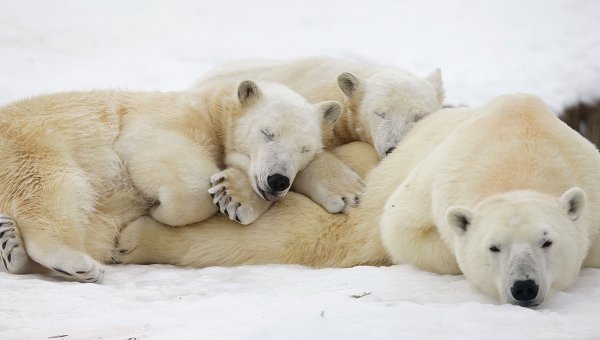 |
December 6, Russian researchers tag three polar bears during Arctic expedition
Three female polar bears were tagged with satellite collars during a research expedition on the Franz Josef Land archipelago in Russia's far north, the Russian environment watchdog said on Friday.
"The expedition found 40 polar bears," the watchdog said, adding that the researchers had immobilized 12 bears, weighed them and taken blood and fur samples for genetic and biochemical tests. |
December 6, Waiting takes a rocket scientist
Just now, scientists involved in the Rocket Experiment for Neutral Upwelling (RENU) are awaiting optimal launch conditions to unravel what happens during neutral upwelling in the atmosphere. The campaign is lead by Dr. Marc Lessard (University of New Hampshire) and involves scientists from UNIS, the And?ya Rocket Range and the National Aeronautics and Space Administration (NASA).
|
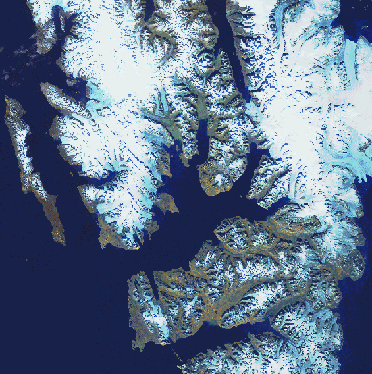 |
December 3, "Fjord Systems and Archives" newly published
The book contains more than 20 papers about the physics, biology and, in particular, about geological processes and palaeo-environments in fjords. Nine of these papers are dealing with fjords on Svalbard.
A new book in the series of the "Geological Society Special Publication" called "Fjord Systems and Archives" has been recently published. This book contains more than 20 papers about the physics, biology and, in particular, about geological processes and palaeo-environments in fjords. Nine of the papers in the book mentioned are dealing with fjords on Svalbard. |
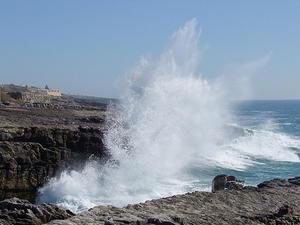 |
December 3, Global Sea-Level Rise at the End of the Last Ice Age Interrupted by Rapid 'Jumps'
Southampton researchers have estimated that sea-level rose by an average of about 1 metre per century at the end of the last Ice Age, interrupted by rapid 'jumps' during which it rose by up to 2.5 metres per century. The findings, published in Global and Planetary Change, will help unravel the responses of ocean circulation and climate to large inputs of ice-sheet meltwater to the world ocean.
|
December 2, 2010 to be among three warmest years, U.N. says
This year is set to be among the three warmest since records began in 1850 and caps a record-warm decade that is a new indication of man-made climate change, the United Nations said on Thursday.
"The trend is of very significant warming," Michel Jarraud, head of the World Meteorological Organization, told a news conference on the sidelines of a meeting of almost 200 nations in the Caribbean resort of Cancun trying to curb global warming. |
December 2, El Nin'o: Better Understanding of Long-Term Changes in Climate
For more than a decade, Dr. Joseph Ortiz, associate professor of geology at Kent State University and part of an international team of National Science Foundation (NSF)-funded researchers, has been studying long-term climate variability associated with El Nin'o. The researchers' goal is to help climatologists better understand this global climate phenomenon that happens every two to eight years, impacting much of the world.
|
December 1, Moscow is ready to assume constructive leadership in the High North
Climate change is a key factor shaping the contours of international security and policy-making. This is particularly the case in the High North, where the retreating ice cap is likely to create a wide range of new opportunities and challenges.
Melting ice cover facilitates the exploitation of mineral resources and opens up access to fish stocks and new shipping routes in particular, which promise shorter distances for trade between Europe and East Asia. |
December 1, Worst Case Scenario: Can We Adapt to a World 2 to 4 Degrees Warmer?
Oxford scientists have contributed to a series of research papers about the impacts of global warming to coincide with the opening of the Climate Change Conference in Cancun, Mexico.
One study, led by Niel Bowerman of the Oxford University's Department of Physics, warns that the conference will fail to meet its objectives unless it addresses not just how much the planet warms, but also how fast it warms. |
November 30, UN Climate Change Conference begins in Cancun
Representatives of the United Nations Framework Convention on Climate Change (UNFCCC) signatory countries gathered on Monday in the Mexican city of Cancun for a summit to draw out a plan to curb global warming.
"We have gathered in Cancun to weave a human response to climate change, using both reason and creativity," UNFCCC Executive Secretary Christian Figueres said. |
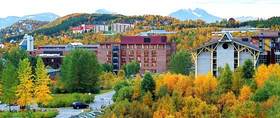 |
November 30, Russian, Norwegian Arctic universities cooperate
The universities in Norwegian Tromso and Russian Arkhangelsk are widening their field of cooperation. Last week a delegation from Arkhangelsk visited Tromso, where it was agreed to give 15 Norwegian students grants to study in Arkhangelsk.
The universities in Troms? and Arkhangelsk included an agreement on cooperation during the Norwegian Days in Arkhangelsk in September. |
 |
November 29, Norwegian Polar Institute participates in two Nordic Centres of Excellence
By involving researchers and enterprise and by gathering their brightest minds, the Nordic countries aim to help solve the challenges related to global climate change. The Top-level Research Initiative is the biggest joint Nordic research and innovation venture to date.
|
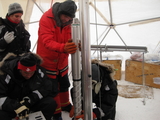 |
November 29, New contaminants found in glacier ice in Svalbard
Legacy pesticides in the Arctic is in decline. Their replacements, however, turns out to be more persistent than expected. The new synthetic pesticides were developed specifically to decompose in their local environment, but they have been found in the remote areas of the Arctic. The accumulation of flame retardants is also a growing concern.
|
 |
November 26, Norway's fiscal budget 2011 strengthens polar research
Research on climate and the environment has been well treated in the fiscal budget presented by the Government on 5 October.
The budget of the NPI has increased by 12.5 million NOK, or 6.1 %. This includes funding for increased running costs of 2 million. New activities connected with MOSJ (environmental monitoring of Svalbard and Jan Mayen), Zeppelin Station for Atmospheric Research and Monitoring in Svalbard and Troll Station in the Antarctic have been granted 6.5 million kroner. Last year's funding of 24 million for NPI's Centre for Ice, Climate and Ecosystems (ICE) will continue, and so will the funding of work on the Integrated Management Plan for the Barents Sea (3 million). The NPI is part of the newly opened Fram Centre in Troms?, a network of 19 Norwegian institutions. The Fram Centre will receive 37 million from the Ministry of the Environment – an increase of 17 million. Contributions from other ministries amount to 13.5 million, which gives this new High North research centre for climate and the environment a total budget of 50.5 million NOK. |
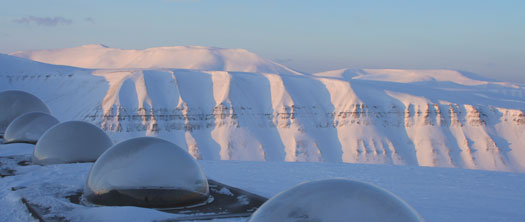 |
November 26, Kick-off for Svalbard Arctic Earth Observing System
The Svalbard Integrated Arctic Earth Observing System (SIOS) is now underway. The EU has funded 4 million Euros for the preparatory phase, which officially kicked off in October. UNIS is one of the key partners in this project, in charge of the future SIOS Knowledge centre.
|
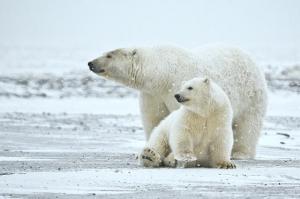 |
November 26, Polar Bears Unlikely to Survive in Warmer World, Biologists Say
November 26 2010.
Polar Bears Unlikely to Survive in Warmer World, Biologists Say
Will polar bears survive in a warmer world? UCLA life scientists present new evidence that their numbers are likely to dwindle.
As polar bears lose habitat due to global warming, these biologists say, they will be forced southward in search of alternative sources of food, where they will increasingly come into competition with grizzly bears.
|
November 25, Extinctions Expected to Increase Strongly Over the Century
The loss of biodiversity will continue in the 21st Century. Global-scale extinctions will increase strongly, the average species abundance1 will decline and their distribution will be disturbed. Scientists thought until recently that the complexity of biodiversity made it unfeasible to predict future trends. Now, however, like the climatologists, life science specialists are able to predict future situations. A group of international experts2, including several IRD researchers, have just published a compilation of global-scale quantitative scenarios depicting possible changes in biodiversity. In spite of a degree of uncertainty in the models elaborated, the possible trends converge. If the processes of human and economic development do not change radically, the Earth is heading for disaster. With changes in land use, in climate and overexploitation of natural resources, humans activities are central to the major threats to biodiversity. The scenarios developed nevertheless point to possible lines of action.
|
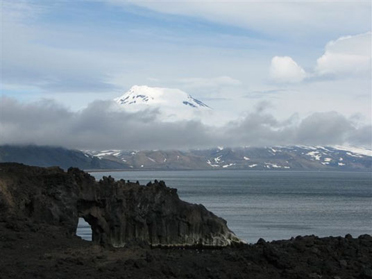 |
November 25, Arctic island Jan Mayen becomes a nature reserve
The Norwegian government has decided to protect the Arctic island Jan Mayen and surrounding seas within 12 nautical miles from shore for its unique Arctic geology and wilderness.
|
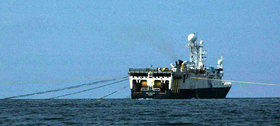 |
November 24, Norway steps up mapping of Arctic oil
The Norwegian government will allocate another 180 million NOK to seismic mapping in its Arctic waters.
The sum, which will be spent over a two-year period, will help Norway stay in front with regard to knowledge in northern waters, Minister of Oil and Petroleum Terje Riis-Johansen highlights in a press release. |
November 23, Norway: Adapting to Climate Change Via Research
A new government report documents Norway's vulnerability to climate change and discusses adaptation measures. The committee behind the report emphasises that research must be a prioritised means of addressing climate challenges.
|
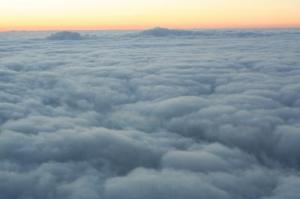 |
November 23, Cloud Study Predicts More Global Warming
Current state-of-the-art global climate models predict substantial warming in response to increases in greenhouse gases such as carbon dioxide. The models, though, disagree widely in the magnitude of the warming we can expect. The disagreement among models is mainly due to the different representation of clouds. Some models predict that global mean cloud cover will increase in a warmer climate and the increased reflection of solar radiation will limit the predicted global warming. Other models predict reduced cloudiness and magnified warming.
|
 |
November 22, Welcome to the IPY 2012 Conference From Knowledge to Action
The IPY 2012 Conference is the final event of International Polar Year 2007 - 2008, the largest international program of interdisciplinary polar research ever undertaken. This conference will provide an opportunity to apply and disseminate the knowledge and scientific results from IPY from around the world and focus on next steps. Participants will consider ways to translate those new understandings into policy that will guide activities in and enhance stewardship of the polar regions.
|
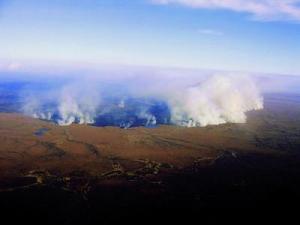 |
November 22, As Arctic Temperatures Rise, Tundra Fires Increase
In September, 2007, the Anaktuvuk River Fire burned more than 1,000 square kilometers of tundra on Alaska's North Slope, doubling the area burned in that region since record keeping began in 1950. A new analysis of sediment cores from the burned area revealed that this was the most destructive tundra fire at that site for at least 5,000 years. Models built on 60 years of climate and fire data found that even moderate increases in warm-season temperatures in the region dramatically increase the likelihood of such fires.
|
November 19, Russia to enhance economic presence in the Arctic
The Russian Government will soon adopt a program for strategic development of the Arctic in the period to 2020. The program includes development of infrastructure and Russian presence on the Svalbard Archipelago.
|
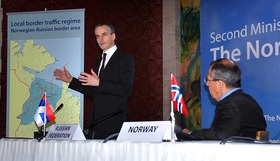 |
November 18, Agreement on delimitation of Barents Sea already showing positive results
The agreement between Norway and Russia on delimitation of the Barents Sea implies huge possibilities for Russia and is already showing positive results, a leading Murmansk-based newspaper writes.
As BarentsObserver reported some Russian communities, especially within the fishery sector, have expressed concern that the agreement will end in Russian fishermen being forced out of the most fish-rich areas in the Arctic. |
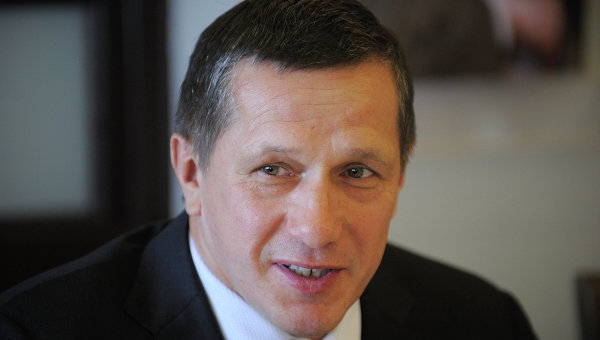 |
November 18, Russia's meteorological network 'out of date' - ecology minister
Russia's meteorological network needs to be upgraded because it has become obsolete, Russian Minister of Natural Resources and Ecology Yury Trutnev said on Wednesday.
The Russian government in September 2010 approved a new meteorology development strategy which stipulates that 22 billion rubles ($704.55 million) will be allocated for the weather observation department up to 2030. |
November 18, New species on the red list 2010
Svalbard saltmarsh grass (Puccinellia svalbardensis) and Brünnich's guillemot (Uria lomvia) have been added to the red list of Svalbard species due to recent significant decrease in population size.
More than 75% of Svalbard listed species have limited ability to gain ground as there are only small areas with favourable conditions to enhance growth. Out of 71 threatened species 11 are influenced in a negative way by climate changes. Human-induced activities influence 40% of species but all of them in negligible way. |
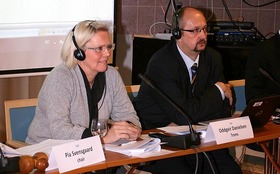 |
November 17, Push for regional dimension in EU's Arctic strategy
A statement from the Barents Regional Council stresses that the European Parliament must include the regional level in their upcoming Arctic strategy debates.
|
November 16, Continuous glacier calving data for Kronebreen and Sveabreen
2010 has been another interesting year both in the field collecting new data for the project and getting more in depth in the data analysis from the previous year. Collaboration with the British Schools Exploring Society (BSES) allowed to get a entirely new dataset.
The grantee have been twice in the field, once in April and once in August. New master project that uses data from the time-lapse cameras started in September 2010.
|
November 16, Innovative and alternative projects winning most
26 projects have received over 5,1mln kroner from the Svalbard Environmental Fund. This time innovative and alternative outreach projects with focus on education received most support.
Out of 48 applications 26 projects were selected for funding. These have received 5,1 mln kroner. In total over 26,6 mln kroner have beed distributed to 150 project with focus on environment and cultural heritiage since 2007 when the Svalbard Environment Fund was established. |
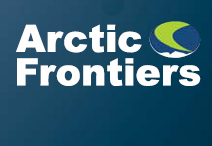 |
November 15, From Lomonosov to Nansen – and beyond
The conference takes place he week 23-28 January in Norway's Arctic capital Tromso.
Arctic Frontiers celebrates its 5th anniversary in 2011 and marks the occasion by addressing the role of research for sustainable development of the Arctic. Over the last five years Arctic Frontiers has developed to become a highly significant arena for discussions of Arctic issues |
November 15, Russian youth get introduced to Norwegian Space Technology
Russian and Norwegian youth researchers, participating in a research camp in Tromso recently, were introduced to the newest of Space technology at Kongsberg Satellite Services.
The President of Space technology at Kongsberg Satellite Services (KSAT), Rolf Skattebo, welcomed the youth researchers to KSAT and gave a brief presentation of the company, while emphasizing on its involvement in industries like space technology, defence, oil and gas, etc. |
November 12, Akademik Fyodorov research vessel to depart for Antarctica
The flagship of the Russian research fleet the Akademik Fyodorov scientific-expedition vessel, on Tuesday is departing from St. Petersburg on another voyage under the programme of the 56th Russian Antarctic Expedition (RAE), Deputy Director of the Arctic and Antarctic Research Institute (AARI) of the Federal Service for Hydrometeorology and Environmental Monitoring (Rosgidromet), RAE head Valery Lukin told Itar-Tass.
|
November 12, Another year of mass balance measurements on Holtedahlfonna
The mass balance series for Holtedahlfonna & Kronebreen was updated for another year, making the continuous record consistent from 2003-2010. On Holtedahlfonna, all data was downloaded from 2 GPS stations, 2 automatic weather stations, 3 individual temperature loggers and an independent sonic sensor. Also, the seismic station located close to the front of Kronebreen was repaired and re-deployed.
|
November 11, IPY EOC Assessment meeting in Bremerhaven, Germany
The IPY Education, Outreach and Communication Assessment Committee was hosted by AWI in Bremerhaven, Germany at the end of October, 2010. We had a very prodcutive meeting with our international assessment team and have made a great start in assessing IPY EOC activities and formulating our recommendations on why the EOC during the latest IPY was so successful.
We are moving forward on creating an interntaional survey that will be sent out worldwide to assess the IPY EOC on a global level. The team also discussed the possibility of a searchable repository of the EOC activities and the need for a system that awards credit to scientists for their EOC work. |
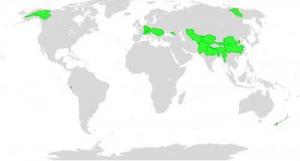 |
November 11, Climate Change: Regional Differences in Water Reservoir Glaciers
Glaciers of large mountain regions contribute, to some extent considerably, to the water supply of certain populated areas. However, in a recent study conducted by Innsbruck glaciologists and climatologists it has been shown that there are important regional differences.
|
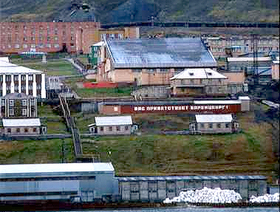 |
November 10, Russians restarted coal mining at Svalbard
The Russian company Trust Arktikugol has restarted coal mining at the archipelago of Svalbard after a two and a half year break.
The production halt came after a fire in the local mine in 2008. Sea water was pumped into the mine to extinguish the fire, which subsequently destroyed equipment and required a major overhaul of production. Production restart was further complicated by low coal prices. |
November 10, Plans for beer breweries on top of the world
A Norwegian and a Russian company have applied for licenses to brew beer on the Arctic archipelago of Svalbard.
The Norwegian Ministry of Health and Care Services is currently considering two applications for permissions to establish a brewery, that will give the Mack brewwry in Tromso, Northern Norway, competition to earn the slogan “The northernmost brewery in the world”.
|
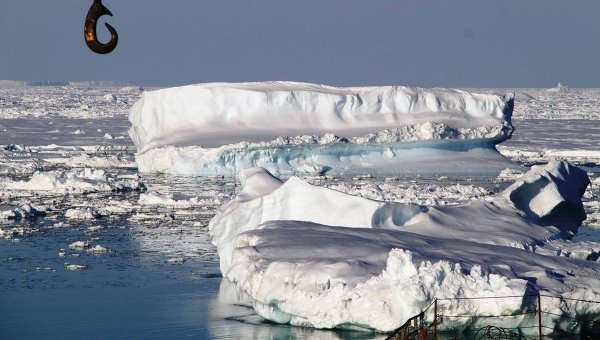 |
November 9, Russia plans to spend $195 mln on Antarctic research up to 2013
Russia plans to allocate some 6 billion rubles ($195 million) for research in Antarctica up to 2013, the head of Russia's meteorological service said on Tuesday.
The Russian government approved last week a national strategy in the Antarctic until 2020 and a scheme to build new research vessels. Alexander Frolov said investment up to 2020 would be around 30 billion rubles ($975 million). |
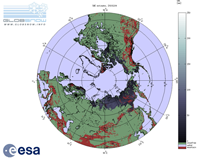 |
November 9, Use satellites to know your snow
As winter approaches, northern dwellers will get assistance from space to help them face the harsh weather. Satellite information on snow cover is now available through ESA’s GlobSnow project soon after it snows.
As well as posing a hazard to communities through transportation shutdowns and floods, snow cover is one of the most important elements influencing the planet’s climate, meteorology and water systems. Understanding snow conditions helps us to predict floods and advance climate studies. |
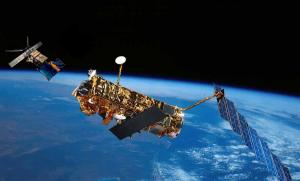 |
November 8, Last 'Tango' in Space: Satellite Duo to Generate 3-D Models of Glaciers and Low-Lying Coastal Areas
Adding to their unique information from previous tandem missions, the European Space Agency's ERS-2 and Envisat satellites have been paired up again -- for the last time. Data from this final duet are generating 3-D models of glaciers and low-lying coastal areas.
The 2010 tandem campaign continues the work of the satellites' earlier joint efforts on measuring the speed of fast-moving glaciers, detecting land-ice motion and developing elevation models over flat terrain.
|
November 8, Arctic Field Grant (Arktisstipend) - Call for Proposals
Svalbard Science Forum, in cooperation with the Norwegian Polar Institute, will award Arctic Field Grants in connection with research projects in Svalbard in 2011.
|
November 3, Russia FM to sign border agreement with Norway
Russian Foreign Minister Sergei Lavrov, currently on a visit to Oslo, on Tuesday will attend the second ministerial meeting of the renewed Northern Dimension (ND).
This regional programme pursued on an equal basis by four partners - Russia, the European Union, Iceland and Norway - was launched in the new format at the quadripartite summit in Helsinki in 2006. The ND geographical territory covers a large area from the arctic and sub-arctic regions of Europe to the southern shores of the Baltic Sea and from northwest Russia in the east to Iceland and Greenland in the west. |
November 3, New geology maps published
The Norwegian Polar Institute has just produced and published two new geology maps for Svalbard.
|
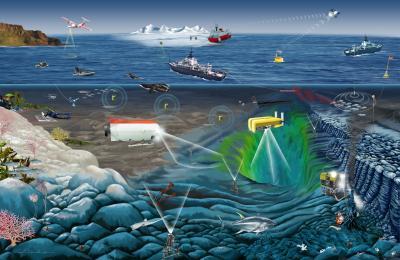 |
November 2, Speed Installation of System to Monitor Vital Signs of Global Ocean, Scientists Urge
The ocean surface is 30 percent more acidic today than it was in 1800, much of that increase occurring in the last 50 years -- a rising trend that could both harm coral reefs and profoundly impact tiny shelled plankton at the base of the ocean food web, scientists warn.
|
November 2, Putin urges Arctic deal for reasources
Former Russian president, and current prime minister of Russia Vladimir Putin Urges Arctic nations to reach an agreement on the areas rich mineral resources. Further he states that he is confident that all such agreements will be peaceful and in accordance to international law. During last month a historic border deal between Norway and Russia was signed, which hopefully can be looked upon as a example of how these matters should be sorted out.
|
November 1, Capturing changing geomorphology by UAV
The UAV deployed in the vicinity of Austre Br?ggerbreen has generated high resolution, high quality aerial imagery. Preliminary analysis shows that the data is well suited to automated particle size measurements and digital elevation model generation.
Using dedicated UAV software, the survey flightswere planned to operate at an altitude of 120m Above Ground Level (AGL). The first priority was to survey the complex braided channel network in the forefield of Austre Br?ggerbreen. The initial georeferenced image mosaic shows complex braiding patterns. The mosaic also shows the transition between glacial moraine and alluvium in the bottom left. |
November 1, Changing security environment in the Arctic
The changes that are happening in the Arctic - the ice melting, the huge reserves of natural resources and the opening of new transport lines - have strategic consequences. This is the reason why the region is gaining importance, says Norway’s Minister of Defense.
|
October 29, As the sea ice melts, so melts the Arctic
The Harper government, to its credit, put in a great deal of money to fund Canada’s participation in the International Polar Year, 2007-2008. For a government that doesn’t like talking about climate change and has among its supporters many who don’t think the Earth is warming, the results might be disturbing.
Everywhere in the Arctic, things are changing rapidly as sea ice melts and thins, water and air heat up, tundra warms, vegetation alters and climate patterns shift. (This, of course, isn’t just happening in the Arctic.) |
October 29, Arctic warming accelerates in 2010, scientists report
The temperature is rising again in the Arctic, with the sea ice extent dropping to one of the lowest levels on record, climate scientists reported last week.
The new Arctic Report Card "tells a story of widespread, continued and even dramatic effects of a warming Arctic," said Jackie Richter-Menge of the Cold Regions Research and Engineering Laboratory, a U.S. Army Corps of Engineers facility in Hanover, N.H. This isn't just a climatological effect. It impacts the people that live there," she added. |
October 29, Black carbon - driving force for climate system?
New results from research on black carbon suggest it is 2nd after CO2 gas that enhances climate warming. Less black carbon might be a key to slow down the global warming.
A layer of black carbon deposit on the snow surface enhances melting as the albedo of this surface changes dramatically and more heat is being absorbed. In addition black carbon particles change the phusical properties of snow, which also affects climate. The largest amount of black carbon is deposited in lower latitudes and does not reach polar regions. However, the small amount that does come as far north as Arctic has much stronger effect on melting as the surface albedo becomes 50 times higher than albedo of the earth dust. |
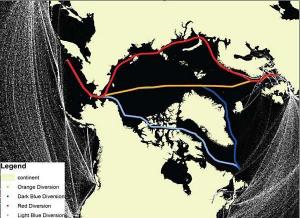 |
October 28, As Arctic Warms, Increased Shipping Likely to Accelerate Climate Change
As the ice-capped Arctic Ocean warms, ship traffic will increase at the top of the world. And if the sea ice continues to decline, a new route connecting international trading partners may emerge -- but not without significant repercussions to climate, according to a U.S. and Canadian research team that includes a University of Delaware scientist.
|
October 28, Nitrogen dynamics in the winter snow pack
What's the role of snow in the nitrogen budget in Arctic systems? Mats Bjorkman seeks answers through measurements of nitrate isotopic signatures, investigating snow chemical composition, snow melt elution and chemistry of deposition events.
|
October 28, Mapping, measuring, filtering, flying - BSES in Svalbard again
British Schools Exploring Society (BSES) members undertook a wide range of fieldwork projects during a five week camping expedition to Oscar II Land in summer 2010.
BSES was set up in 1932 by Surgeon Commander George Murray Levick RN, a member of Scott’s 1910 Antarctic expedition. Since then the organisation has introduced many thousands of teenagers to scientific fieldwork in wilderness areas across the globe. |
October 27, CryoSat ice mission gets clean bill of health
Realising a satellite mission is a complicated task, with many milestones to pass before data are delivered to advance our understanding of Earth. However, scientists will soon have access to precious information on ice thickness as the commissioning of ESA's CryoSat draws to a close.
Since its launch in April, engineers and scientists have been hard at work to ensure the CryoSat Earth Explorer mission is in working order with everything properly tuned. This important phase guarantees that the scientific community receives the best-possible data so that they can build a true picture of what changes are occurring in the fragile polar regions. |
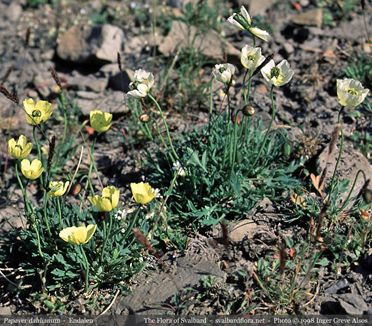 |
October 27, White or yellow - what's best colour for flowers in Svalbard?
Colour has been known as important factor in both attracting insets and therefore assuring pollination and contribute to increased heat budget of flowers. However, 48% of Svalbard flora is white. The question is: why?
With no colour-sensitive bees in Svalbard there is no need for a colourful petals. Colour however, adds warmth to the flower centre and speed up seed maturing process, a valuable thing since the summer is cold and short. How to explain that as many as 48% of all plants are white then? Another large group are flowers that are either white or yellow like Svalbard poppy (Papaver dahlianum).
|
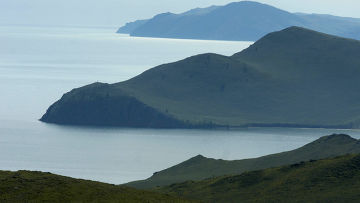 |
October 26, Water is the new oil
Russia is considering becoming the world’s top supplier of fresh water as growing demand turns it into a strategic resource. That is if it can upgrade its own consumption to modern standards.
If you pay attention to the perils that future may bring, you probably know that the oil will run dry, the sea level will rise and drown coastal regions, and that fresh water will be such a valuable asset that even the oil price will seem low in comparison. All this provided that the world will not end in 2012 in accordance with Mayan prophecies, of course.
|
October 26, Southampton scientists pioneer wireless sensors to explore little known glacier phenomenon
Researchers at the University of Southampton are pioneering the use of wireless sensors to study a little-known phenomenon that affects the movement of glaciers.
Professor Jane Hart from the School of Geography and Dr Kirk Martinez of the School of Electronics and Computer Science (ECS) have been awarded a Leverhulme Trust Research Project Grant to study glacier ‘stick-slip’ motion as it affects the Skalafellsj?kull glacier in Iceland. According to the team, scientists know surprisingly little about ‘stick-slip’ motion, the term given to the events which cause ice sheet movement, and occur in the normal course of glacier sliding. |
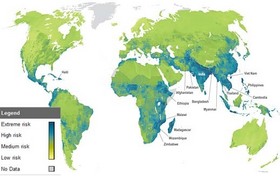 |
October 25, Nordic countries least vulnerable to climate change
Norway and Finland are the countries that will be least affected by climate change, while Bangladesh and India are most at risk, according to a recently released index.
The 170-country Climate Change Vulnerability Index, released by global risks advisory firm Maplecroft, ranks the Nordic countries and Ireland as the least vulnerable to the impacts of climate change over the next 30 years. |
October 25, USA warns of record Arctic warming
The Arctic is experiencing record-setting high temperatures, ice melt and glacier area loss, said the Arctic Report Card, a study conducted by a team of 69 international scientists.
The report highlights evidence that higher air temperatures in the Arctic contributes to changes in atmospheric circulation further south. |
October 22, Russia govt to discuss RF Antarctic Development Strategy
The Russian government will discuss on Thursday the Strategy of Russia’s activity development in the Antarctic for a period up to 2020 and preparations for the autumn-winter season of 2010-2011.
Minister of Natural Resources Yuri Trutnev will report on the first issue. According to Cabinet’s press service, the goal of the Strategy is to implement the national interests of Russia in the Antarctic, in accordance with the norms and principles of international law and basic directions of Russia’s domestic and foreign policy, as well as preventing potential threats to the national interests. |
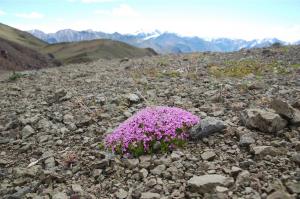 |
October 22, Climate Change Tipping Points for Populations, Not Just Species: Survival, Reproduction of Thousands of Arctic and Alpine Plants Measured
As Earth's climate warms, species are expected to shift their geographical ranges away from the equator or to higher elevations.
While scientists have documented such shifts for many plants and animals, the ranges of others seem stable. When species respond in different ways to the same amount of warming, it becomes more difficult for ecologists to predict future biological effects of climate change -- and to plan for these effects. |
October 21, Crew circles North Pole in one summer
A trimaran sailing boat has circled the North Pole in a single summer season, a feat made possible by global warming and the melting of the Arctic ice cap, the boat's international crew said Thursday.
The "Northern Passage" left the western Norwegian port of Bergen at the end of June and was expected to arrive back there Thursday after first sailing the northern passage off Russia and then the northwestern passage off Canada. Just a few years ago, the trip would have been impossible to complete so quickly due to the polar ice. Following in the wake of the Russian ship "Peter I," which sailed a similar route at almost the same time, the Norwegian trimaran is the second vessel to ever complete the mythical voyage in the space of a single Arctic summer. |
October 21, Hot Stuff: Marine Operations in the Arctic
The possibility of regular, deep draft Arctic traffic and energy exploration is no longer an academic question. The new question is not “if,” but “when.” Will we be ready?
According to the National Oceanic and Atmospheric Administration’s (NOAA) National climate Data Center, the first nine months of 2010 tied the mark for the warmest on record (1998). NOAA’s latest report looks at combined, global land and ocean surface temperatures. As it turns out, both metrics ranked second in their respective categories, including data stretching all the way back to 1880. Separately, the National Snow and Ice Data Center (NSIDC) reported that sea-ice coverage in the Arctic fell to its third lowest amount on record. |
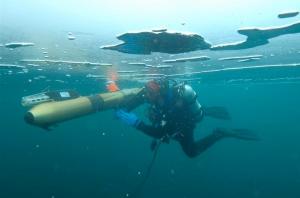 |
October 20, Underwater Robot to Explore Ice-Covered Ocean and Antarctic Ice Shelf
Researchers at the University of British Columbia are deploying an underwater robot to survey ice-covered ocean in Antarctica from Oct. 17 through Nov. 12, 2010.
Scientists predict that the sea ice area around Antarctica will be reduced by more than 33 per cent by 2100, accelerating the collapse of ice shelves. Up to hundreds of metres thick, ice shelves are floating platforms of ice that cover almost half of Antarctica's coastline. |
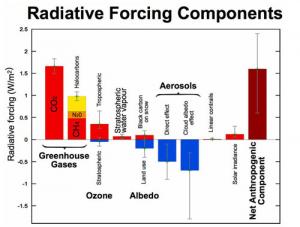 |
October 20, Studies of Radiative Forcing Components: Reducing Uncertainty About Climate Change
Much is known about factors that have a warming effect on Earth's climate -- but only a limited amount is understood about factors that have a cooling effect. Researchers at the Center for International Climate and Environmental Research -- Oslo (CICERO) are working to fill the knowledge gap.
|
October 19, Drought May Threaten Much of Globe Within Decades, Analysis Predicts
The United States and many other heavily populated countries face a growing threat of severe and prolonged drought in coming decades, according to a new study by National Center for Atmospheric Research (NCAR) scientist Aiguo Dai. The detailed analysis concludes that warming temperatures associated with climate change will likely create increasingly dry conditions across much of the globe in the next 30 years, possibly reaching a scale in some regions by the end of the century that has rarely, if ever, been observed in modern times.
|
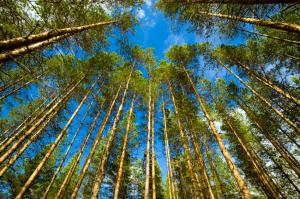 |
October 18, Coniferous Forests: New Research Changes Understanding of Atmospheric Aerosol Properties and Climate Effects
Terrestrial vegetation and atmospheric photochemistry produce large amounts of fine particles in the atmosphere, thereby cooling Earth's climate. According to new research published in the Oct. 14 issue of Nature, the physical state of the fine particles produced by coniferous forests is solid, whereas previously scientists have assumed that these particles were liquid. The new findings have major implications for our understanding of particle formation processes, for the transformation of particles in the atmosphere and for their effects on climate.
|
October 18, Perspective from Moscow: The International Arctic Forum
Competition for the Arctic has been growing intense since 2007. The Arctic neighboring states have proclaimed or renewed their national strategies on the Arctic. In the short-, mid- and long-term perspective, the question of who is entitled to the Arctic region and its vast store of resources remains unanswered in 2010.
Three years after a Russian submarine crew led by Arthur Chilingaroy (Member of the State Duma, Russian President’s envoy for international cooperation in the Arctic and the Antarctic and Head of the Association of polar explorers who participated in the forum) planted the Russian flag on the seabed of the geographical North Pole, Russia sponsored and held the two-day International Arctic Forum, which was organized by the Russian Geographical Society. From flagging to discussing has been the proposed Russian perspective. |
October 15, Global natural disasters may double in next decade - WWF
The number of natural disasters in the world may double during the next 10 to 15 years, the head of WWF Russia's climate program said on Wednesday.
Climate change will lead to a growth in a power and a number of hazardous meteorological events in the world, Alexei Kokorin said on the International Day for Natural Disaster Reduction. |
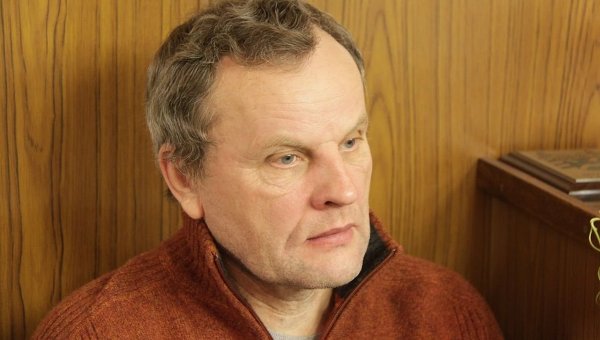 |
October 15, Dreaming of an ice island
Almost all of his life’s dreams seem to have come true, he has traveled throughout the world, visiting all continents except Australia, but there is still one dream that has yet to be fulfilled – discovering an ice island.
Discovering even an ice floe today can be a problem – what with Arctic sea ice melting over the past summer to cover the third-smallest area on record – but Vladimir Bessonov, a leading scientist of the Shelf-2010 expedition, is optimistic.
|
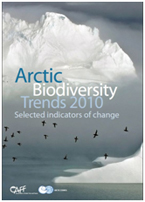 |
October 14, Arctic Side event by CAFF at COP10, Nagoya, Japan
Unique Arctic habitats for flora and fauna, including sea ice, tundra, lakes, and peatlands have been disappearing over recent decades, and some characteristic Arctic species have shown a decline. The changes in Arctic Biodiversity have global repercussions and are further creating challenges for people living in the Arctic.
The above statements are examples on the key findings describing changes in Arctic biodiversity that is presented in 'The Arctic Biodiversity Trends – 2010: Selected Indicators of Change', a new report synthesizing scientific findings on the status and trends for selected biodiversity in the Arctic issued by the Conservation of Arctic Flora and Fauna (CAFF) Working Group under the Arctic Council. |
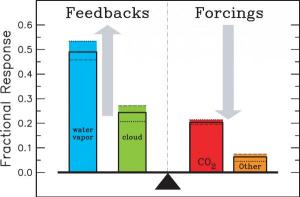 |
October 14, Carbon Dioxide Controls Earth's Temperature, New Modeling Study Shows
Water vapor and clouds are the major contributors to Earth's greenhouse effect, but a new atmosphere-ocean climate modeling study shows that the planet's temperature ultimately depends on the atmospheric level of carbon dioxide.
The study, conducted by Andrew Lacis and colleagues at NASA's Goddard Institute for Space Studies (GISS) in New York, examined the nature of Earth's greenhouse effect and clarified the role that greenhouse gases and clouds play in absorbing outgoing infrared radiation. |
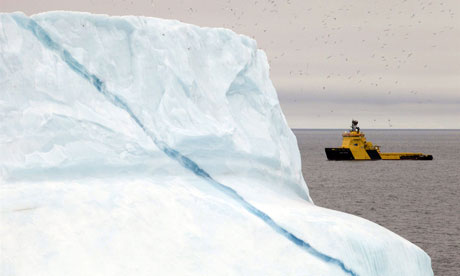 |
October 13, Climate change could lead to Arctic conflict, warns senior Nato commander
Global warming and a race for resources could spark a new 'cold war' in the Arctic, US naval admiral warns ahead of key talks on environmental security.
One of Nato's most senior commanders has warned that global warming and a race for resources could lead to conflict in the Arctic. The comments, by Admiral James G Stavridis, supreme allied commander for Europe, come as Nato countries convene on Wednesday for groundbreaking talks on environmental security in the Arctic Ocean. |
October 13, Scientists continue work to substantiate Russia’s Arctic claims
Russia's two Arctic expeditions have met in the middle of the ocean to share their breakthrough discoveries.
Members of Russia’s North Pole expedition Shelf-2010 have docked with their colleagues on board the Akademik Fyodorov icebreaker, the flagship of the Northern fleet, a virtual floating laboratory. Around a hundred scientists have spent 70 days in the Arctic gathering evidence to support the claim that the Lomonosov Ridge is part of Russia's continental shelf.
The details of the mission are being kept top secret, but the head of the expedition, Andrey Zenkov, looks more than pleased with the results. |
October 12, Hugues Lantuit - Intro to Polar Research Organizations, major projects and acronyms
This webinar gives an overview of the different players involved with polar research, the different types of research that is being conducted in polar regions, and the key acronyms decoded.
|
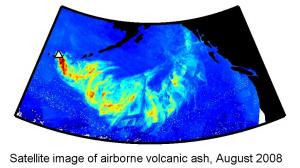 |
October 12, Volcano Fuels Massive Phytoplankton Bloom
Advocates for seeding regions of the ocean with iron to combat global warming should be interested in a new study published October 6 in Geophysical Research Letters. A Canada-US team led by University of Victoria oceanographer Dr. Roberta Hamme describes how the 2008 eruption of the Kasatochi volcano in the Aleutian Islands spewed iron-laden ash over a large swath of the North Pacific. The result, says Hamme, was an "ocean productivity event of unprecedented magnitude" -- the largest phytoplankton bloom detected in the region since ocean surface measurements by satellite began in 1997.
|
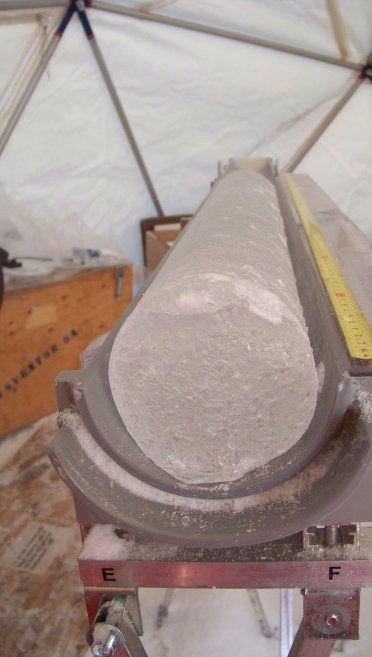 |
October 11, New generation pollutants - not so easy to get rid of
In the recent years many chemical components known as persistent environmental pollutants were replaced by new generation of chemicals. These were expected to break down easily. However, data collected from Svalbard ice cores show they are more stable than it was thought and they travel over great distances too.
Some synthetic components were found in many samples taken from the uppermost layers of the ice core drilled in Holtedahlfonna and Austfonna in Svalbard. They are suspected to travel from Eurasia during haze events that occur frequently in the Arctic in spring (March-April). |
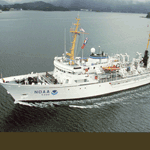 |
October 8, NOAA Ship Charts New Arctic Routes
The National Oceanic and Atmospheric Administration (NOAA) recently dispatched a surveying vessel to pinpoint navigational hazards in the Arctic Ocean. The Fairweather, based in Ketchikan, Alaska, will detect dangers in Arctic waters that haven’t been charted for more than 50 years, according to NOAA, which deployed the ship at the request of U.S. Navy, U.S. Coast Guard, Alaska Maritime Pilots and the commercial shipping industry.
The Fairweather spent July and August 2010 examining seafloor features, measuring ocean depths and supplying data that will be used to update NOAA nautical charts that cover 350 square nautical miles in the Bering Straits near Cape Prince of Wales. Data collected by the ship also will be used to support research on fish habitat and help establish new tidal reference points (datums) in the region. |
October 8, How a 2-degree climate change would hit Canada
Ongoing climate change means that summer Arctic sea ice could be halved, runoff in the South Saskatchewan River basin reduced and the cost of shipping through the Great Lakes and St. Lawrence Seaway could rise due to lower water levels, according to a compilation of research published Tuesday.
Billed as the first comprehensive illustration of expected climate impacts in Canada, the report is a joint project of the National Round Table on the Environment and the Economy (NRTEE) and the Royal Canadian Geographical Society (RCGS), which publishes Canadian Geographic and G?ographica magazines. The October issue of the magazines feature the compiled research, including a diagram outlining 60 effects of climate change at increasing levels of warming. |
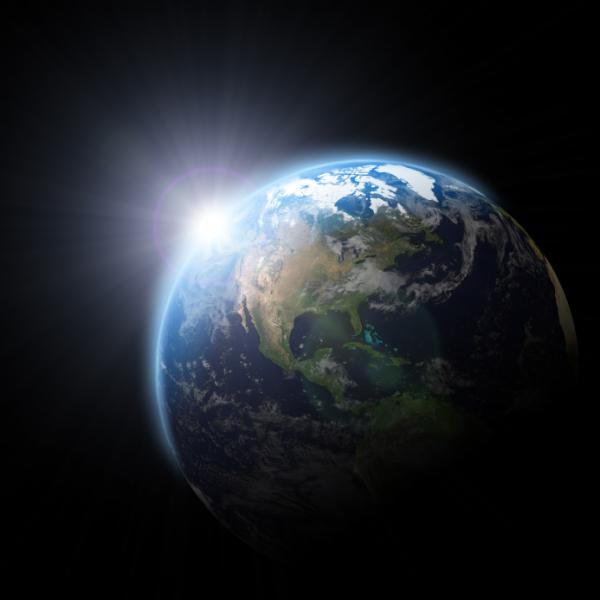 |
October 7, Decline in Sun's Activity Does Not Always Mean That Earth Becomes Cooler, Study Shows
The Sun's activity has recently affected Earth's atmosphere and climate in unexpected ways, according to a new study published in the journal Nature. The study, by researchers from Imperial College London and the University of Colorado, shows that a decline in the Sun's activity does not always mean that Earth becomes cooler.
|
October 6, Russia’s new Arctic strategy ready in two weeks
A proposal for strategic development of the Arctic will be handed over to the Russian Government in two weeks time, says Minister of Regional Development Viktor Basargin. The project will probably be approved by the end of the year.
|
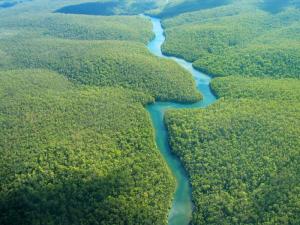 |
October 5, Alarming Increase in Flow of Water Into Oceans Due to Global Warming, Accelerated Cycle of Evaporation, Precipitation
Freshwater is flowing into Earth's oceans in greater amounts every year, a team of researchers has found, thanks to more frequent and extreme storms linked to global warming. All told, 18 percent more water fed into the world's oceans from rivers and melting polar ice sheets in 2006 than in 1994, with an average annual rise of 1.5 percent.
|
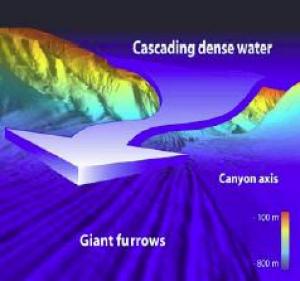 |
October 4, Searching for Dense Water Cascades in the Arctic Ocean
The Arctic is one of the most sensitive regions of the plant to the effects of global climate change. The RV Jan Mayen research cruise, which has been contributed to by a team of experts from the GRC-CM Marine Geosciences group at the University of Barcelona, is aimed at studying the phenomenon of dense water cascading and its relationship with climate change in an area to the west of the Svalbard Islands in the Arctic Circle.
|
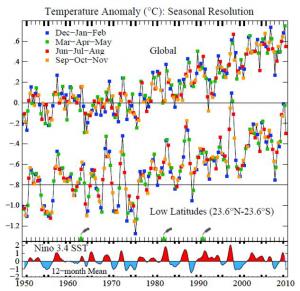 |
October 4, How Warm Was This Summer?
An unparalleled heat wave in eastern Europe, coupled with intense droughts and fires around Moscow, put Earth's temperatures in the headlines this summer. Likewise, a string of exceptionally warm days in July in the eastern United States strained power grids, forced nursing home evacuations, and slowed transit systems. Both high-profile events reinvigorated questions about humanity's role in climate change.
|
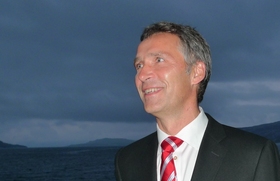 |
October 4, 22 million EUR more to the High North
The Norwegian Government plans to increase the High North efforts with 22 million EUR for 2011. This will increase the Governments annual funds on the Norwegian High North to a total of 150 million EUR.
The record high funds on the Norwegian High North policy is aimed at strengthening sectors like settlements policy, labor market, wealth creation, climate and environment preservation, sustainable management, competence and culture. |
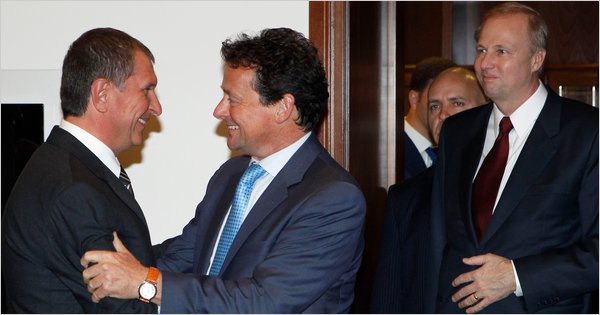 |
October 1, In Russia, BP Sees a Second Act
Though its gushing well in the Gulf of Mexico is capped, BP seems doomed to years of hostile regulation and lawsuits in the United States.
But in Russia, the second-most important country for the company’s operations, BP’s fortunes are brighter than ever. Russian companies are talking to BP about buying billions of dollars in oil fields and other assets to help it pay its gulf cleanup and compensation costs. Along with a partner, BP is planning to explore the rich oil fields in Russia’s Arctic waters, a region that is off limits in the United States and Canada. |
September 30, Ocean cold snap paused global warming in 70s: study
A cold snap in northern oceans around 1970 may have caused a dip in world temperatures that briefly interrupted a trend of global warming, scientists said on Wednesday.
Many experts had previously explained a slight global cooling around 1970 as a side-effect of a slow build-up of sun-dimming air pollution from factories, power plants and cars that cleared up in later years with stricter air pollution laws. |
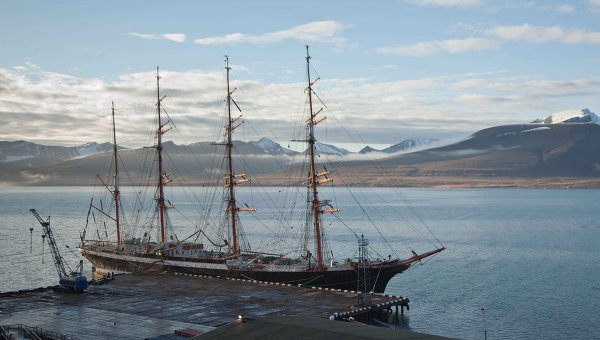 |
September 30, Sedov sailing ship stops by Spitsbergen Island, heads for Murmansk
Russian training vessel Sedov has become the first large sailing ship to visit the Svalbard Archipelago during the fall and winter season, spokeswoman for Murmansk State Technical University Tatyana Zhitnik told RIA Novosti.
“The training ship crossed the 78th north parallel, entered Isfjord, a famous ice-filled fjord, and moored at the port of Barentsburg late last week, setting a new record. No other vessel in her class has ever reached such a remote area in wintertime,” Zhitnik said. |
September 29, Cooling the Arctic hype
The Arctic bilateral border agreement signed by Norway and Russia earlier this month rekindled media hype over the so-called race for the region’s energy treasures, which could amount to as much as 30 percent of the world’s undiscovered gas and 13 percent of its undiscovered oil. But the frenzy is so unwarranted, at least in terms of energy, that even Prime Minister Vladimir Putin intervened last week to ask all parties to cool down. To begin with, current estimates are based on incomplete data. Nobody really knows how large the hydrocarbon deposits in the Arctic are because there has been almost no exploration, even by Arctic countries Russia, Denmark (through Greenland), Canada, Norway, and the U.S. But even if significant oil and gas deposits are discovered, and there have been some discoveries, most of the promising exploration areas are on shallow undisputed waters on the continental shelf that will remain economically unfeasible to develop for a long time.
|
September 29, Far-flying seabirds
The migration routes of Arctic skuas have been mapped for the first time.
In summer 2009, researchers from the Norwegian Institute for Nature Research (NINA) captured 18 Arctic skuas (Stercorarius parasiticus) in the Kongsfjorden area and attached light-weight Global Location Sensors (GLS) to their legs. These devices estimate the location of seabirds using longitude and latitude measurements based on day length and the time of midday relative to GMT. |
September 28, Russian, Norwegian FMs sure of peace in the Arctic
The race to the North Pole will not turn the Arctic into a zone of conflict, Russian Foreign Minister Sergei Lavrov and his Norwegian counterpart Jonas Gahr Store wrote in a joint article, published by the Handelsblatt newspaper on Tuesday.
“We are absolutely sure that we could show in the Arctic how peace and the common interests are protected by the international law. We even believe that the common challenges in the Arctic may create a new situation in international relations, which will be based on cooperation instead of rivalry,” the Russian and Norwegian foreign ministers wrote.
|
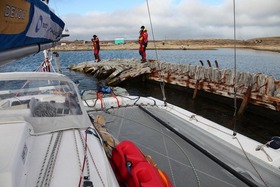 |
September 27, Around the North Pole in less than three months
Norwegian explorer Borge Ousland and his crew managed to sail around the North Pole in one season. It took their 31 feet sailboat less than three months to sail through both the Northeast and Northwest passages.
The trimaran “Northern Passage” left Oslo on June 23, and yesterday it reached the Lancaster Strait, which marks the eastern part of the Northwest Passage. |
September 24, Arctic Soil Study Turns Up Surprising Results
Across the globe, the diversity of plant and animal species generally increases from the North and South Poles towards the Equator but surprisingly that rule isn't true for soil bacteria, according to a new study by Queen's University biology professor Paul Grogan.
|
September 24, New project to improve logistics and transport in the Arctic
Russian and Norwegian interests met in Arkhangelsk last week to discuss a new project aimed at a fast improvement of conditions for logistics and transport in Arctic areas.
The project focuses on four transport hubs in the area where the Northern Maritime Corridor meets the Northern Sea Route, says Harald Sorensen, Project Coordinator for the Northern Maritime Corridor and adviser in the Norwegian Barents Secretariat. The four hubs are Kirkenes, Norway, and Murmansk, Arkhangelsk and Naryan-Mar in Russia.
source
|
September 23, Russia to make new atlas of the Arctic
Russia will compile a new integrated atlas of the Arctic, says Minister for Emergencies Situations and Head of the Russian Geographic Society Sergey Shoygu.
- Russia is coming back to the Arctic and Antarctic to study the areas after the hard years of the 1990s when there was not enough money for this job, Shoygu said at a press-conference devoted to the opening of the International Arctic Forum “Arctic: Territory of Dialogue”, newspaper Pravda.ru reports. |
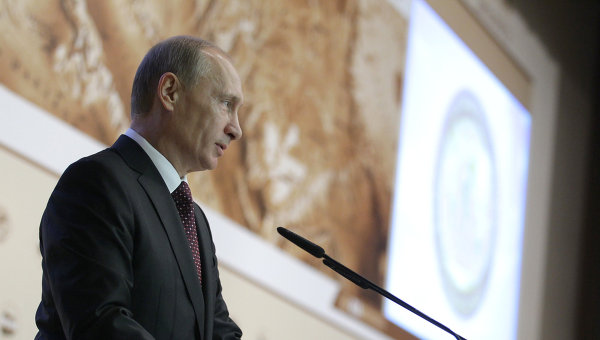 |
September 23, There will be no 'battle for the Arctic' - Putin
Russian Prime Minister Vladimir Putin sought to ease concerns about a battle for Arctic territory by saying on Thursday that partnership agreements would settle all border disputes in the region.
"We are keeping a close eye on the development of the situation in the region...and believe that most of the scare stories about the Arctic are groundless," Putin told a news conference at the International Arctic Forum in Moscow. |
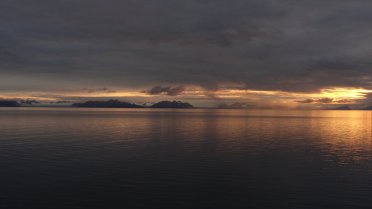 |
September 23, Sleeping beauty on the arctic sea floor
Thermophilic bacteria with a hibernation period of up to 100 million years have been discovered on the sea floor off Svalbard.
When Casey Hubert (Newcastle University) and his colleagues studied bacterial activity of sediment samples from the arctic sea floor off Svalbard, they found peaks of biological activity between 40 and 55 gr.C. The sediment contained spores of thermophilic (heat-loving) bacteria that germinated when temperatures approached 50 gr.C. Genetic analyses revealed that these microbes are most closely related to bacteria living in warm, oxygen depleted environments such as the oceanic crust and petroleum reservoirs. |
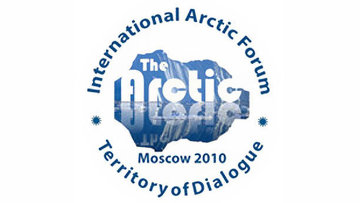 |
September 22, International Arctic Forum opens in Moscow
World's leading experts on the Arctic and prominent politicians will gather on Wednesday in the Russian capital to discuss the political, economic and environmental issues affecting the Arctic region.
The Russian Geographical Society hosts the forum, entitled "The Arctic: Territory of Dialogue", on September 22-23. Russian Prime Minister Vladimir Putin, who heads the Russian Geographical Society Board of Trustees, is expected to attend.
|
September 22, New protected areas in the Arctic
Russian authorities intend to establish five new specially protected areas in the Arctic, one of them in the Barents Sea.
The new protected areas are located respectively in the area of the Bear Islands in the far east, in the peninsula of Chukotka, in Taymyr and in the Barents Sea, Minister of Natural Resources Yuri Trutnev told journalists this week.
source
|
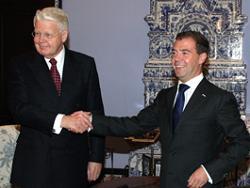 |
September 22, Medvedev, Grimsson discussing cooperation in Arctic
Presidents Dmitry Medvedev of Russia and Olafur Grimsson of Iceland have met here to discuss trade and economic relations and cooperation in the Arctic region.
|
September 21, Russia likely to resolve Lomonosov Ridge dispute in its favor says diplomat
Russia will succeed in persuading the UN to rule in favor of its claim to the Lomonosov Ridge under the Arctic Ocean, an ambassador at large said on Monday.
|
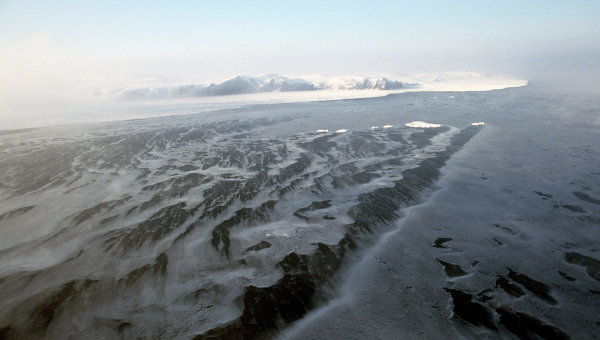 |
September 20, Moscow forum to seek solutions on sharing the Arctic's mineral wealth
Recent developments in the Arctic, such as the discovery of new oil deposits off Greenland and border delimitation expeditions in the Arctic by various nations, suggest it is time to begin a serious dialogue on the region. Russia intends to do just this with the forum The Artic - Territory of Dialogue.
The forum has been organized by the Russian Geographical Society in association with the RIA Novosti news agency. It will be held in Moscow on September 22 and 23. |
September 20, Report about environmental pollution in connection to settlements on Svalbard
Akvaplan-niva has recently published a report that summarizes the state of pollution in marine environments in connection to settlements on Svalbard.
The report is part of the PCB-project initiated by the Governor of Svalbard and focuses on areas around Adventfjorden (Longyearbyen), Gronfjorden (Barentsburg), Billefjorden (Pyramiden) and Colesbukta. Where available, data on the sources of pollution e.g. contaminated soil and freshwater are presented as well. |
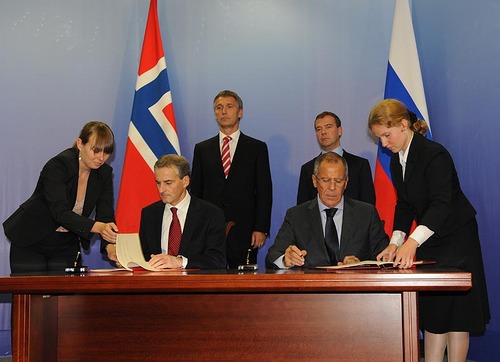 |
September 17, Norway and Russia sign maritime delimitation agreement
The treaty was signed some minutes before 5 pm downtown Murmansk today by the Norwegian and Russian Foreign Ministers Jonas Gahr St?re and Sergey Lavrov. Both President Dmitri Medvedev and Prime Minister Jens Stoltenberg were attending the ceremony.
Both Medvedev and Stoltenberg said at the press-conference afterwards that Murmansk was the most natural place to sign such historical treaty between the two nations. |
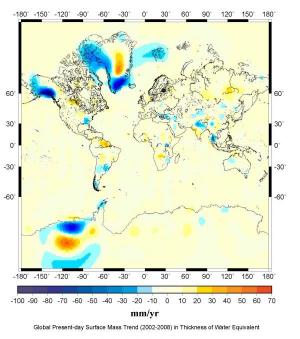 |
September 17, NASA Uses New Method to Estimate Earth Mass Movements
NASA and European researchers have conducted a novel study to simultaneously measure, for the first time, trends in how water is transported across Earth's surface and how the solid Earth responds to the retreat of glaciers following the last major Ice Age, including the shifting of Earth's center of mass.
|
September 17,Concluding document of the Terrestrial Ecosystems Workshop now available
In May 2009, SSF held a workshop concerning terrestrial research in Ny-Alesund. The resulting document defines core elements of the Terrestrial Ecosystem Flagship program, the third of several flagships that aim to strengthen international cooperation in Ny-Alesund.
|
September 16, UN CLCS can only decide what shelf owns Lomonosov Ridge – Lavrov
September 16 (Itar-Tass) - The U.N. Commission on the Limits of the Continental Shelf (CLCS) can only decide what country’s continental shelf owns the Lomonosov Ridge, Russian Foreign Minister Sergei Lavrov said after the talks with his Canadian counterpart Lawrence Cannon on Thursday.
|
September 16, Optimizing Climate Change Reduction
Scientists at the Carnegie Institution's Department of Global Ecology have taken a new approach on examining a proposal to fix the warming planet.
So-called geoengineering ideas -- large-scale projects to change the Earth's climate -- have included erecting giant mirrors in space to reflect solar radiation, injecting aerosols of sulfate into the stratosphere making a global sunshade, and much more. |
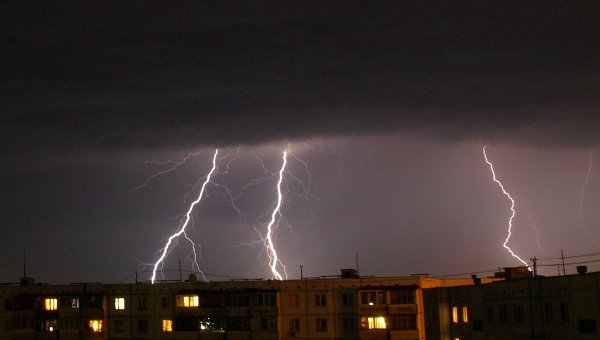 |
September 15, Russia plans to restore its weather satellite network by 2030
Russia will fully rebuild its network of weather forecasting and monitoring satellites by 2030 under a state program for the development of meteorology, the government said in a statement on Tuesday.
At present, Russia has only one weather satellite, the Meteor-M type, in orbit and mostly uses meteorological data from U.S. and European weather agencies. |
September 15, Arctic ice melting quickly, report says
The ice around the North Pole has experienced another severe meltdown this year, German scientists said.
Around 1.9 million square miles of the Arctic Ocean will be covered by ice by the end of this summer, the third-lowest figure since satellite monitoring began in the 1970s, scientists from the University of Hamburg and the Alfred Wegener Institute for Polar and Marine Research said Monday.
|
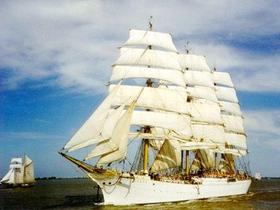 |
September 15, “Sedov” visits Tromso
The world’s largest traditional sailing ship will make port call to Tromso in Northern Norway on Wednesday.
It is Murmansk State Technical University that operates “Sedov” and since Tromso is both Norway’s most important university- and research centre in the north and friendship town with Murmansk, the visit was a natural stopover after “Sedov” sailed from Reykjavik last week.
|
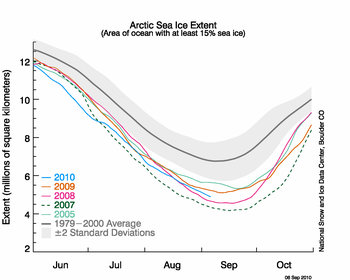 |
September 15, End of summer approaches for Arctic sea ice
Arctic sea ice generally reaches its annual minimum extent in mid-September. This August, ice extent was the second lowest in the satellite record, after 2007. On September 3, ice extent dropped below the seasonal minimum for 2009 to become the third lowest in the satellite record.
The Northwest Passage and the Northern Sea Route are largely free of ice, allowing the potential for a circumnavigation of the Arctic Ocean. At least two expeditions are attempting this feat, the Norwegian explorer Borge Ousland and the Peter I yacht from Russia. |
September 14, Not Just for Polar Bears: New Climate Report Documents Growing Extinction Risk for Arctic Wildlife
A new report offers a dramatic look at Arctic species being pushed toward extinction by rapid climate change. “Extinction: It’s Not Just for Polar Bears” documents 17 Arctic animals, from Arctic foxes to whales to plankton, struggling to survive the effects of climate change and ocean acidification. It was produced by the Center for Biological Diversity and Care for the Wild International.
“The polar bear is the best-known victim of rapid melting in the Arctic, but if we don’t slash greenhouse pollution, many more creatures will follow it down the path to extinction,” said Shaye Wolf, the Center’s climate science director and lead author of the report. |
September 14, Sun and Volcanic Eruptions Pace North Atlantic Climate Swings
A study presented in Nature Geoscience suggests that changes in solar intensity and volcanic eruptions act as a metronome for temperature variations in the North Atlantic climate.
|
September 14, NASA's Aqua Satellite Takes Snapshot of Arctic Ocean Sea Ice
The Arctic Ocean is covered by a dynamic layer of sea ice that grows each winter and shrinks each summer, reaching its yearly minimum size each fall. While the 2010 minimum remains to be seen, NASA's Aqua satellite captured a snapshot on Sept. 3.
|
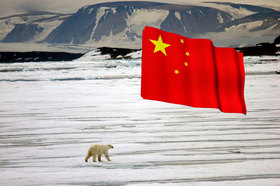 |
September 13, Norwegian-Chinese cooperation on Polar research
The Norwegian Polar Institute and the Polar Institute of China have concluded an agreement on cooperation on Polar research.
The two organizations are going to cooperate on scientific research of glaciers, sea ice and organization of research mission to the Arctic. |
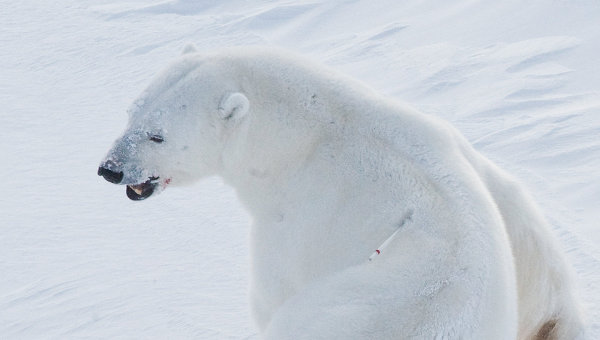 |
September 13, International Arctic forum to focus on regional environmental problems
Ecologists, experts and politicians will gather at the International Arctic forum "Arctic: territory of dialogue" on September 22-23 in Moscow to discuss the social, economic and environmental problems of the region.
The International Arctic forum is organized by the Russian Geographical Society (RGO).
|
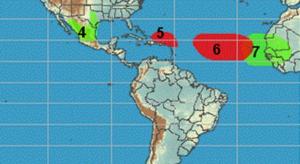 |
September 10, New Report Seeks to Improve Climate Forecasts
From farmers to government officials in charge of efficiently managing Earth's precious water and energy resources, people all over the world rely on accurate short-term climate forecasts on timescales ranging from a few weeks to a few years to make more informed decisions.
|
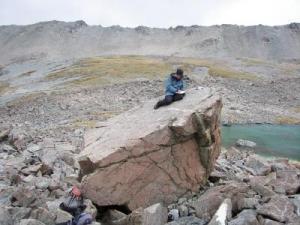 |
September 10, New Clue to How Last Ice Age Ended
As the last ice age was ending, about 13,000 years ago, a final blast of cold hit Europe, and for a thousand years or more, it felt like the ice age had returned. But oddly, despite bitter cold winters in the north, Antarctica was heating up. For the two decades since ice core records revealed that Europe was cooling at the same time Antarctica was warming over this thousand-year period, scientists have looked for an explanation.
|
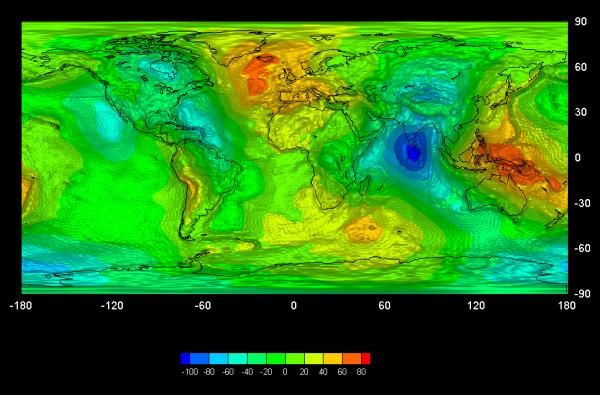 |
September 9, GOCE Gravity Mission Back in Action
ESA's GOCE gravity mission has recovered from a glitch that prevented the satellite from sending its flow of scientific data to the ground. News of the recovery comes earlier than expected, thanks to the fervent efforts of a team of experts.
|
September 8, Global warming will create new Arctic power centers
Global warming will make cities in northern countries like Canada and Scandinavia the next big global economic powers, a senior academic has predicted. Towns in these areas will become 'migration magnets' as previously frozen assets become usable.
Professor Laurence Smith, a UCLA professor of geography and of earth and space sciences, claims that sparsely populated parts of world like the northern US, Greenland and Russia will become 'migration magnets' as people flock to the new centers of global power, UCLA's web site reads. |
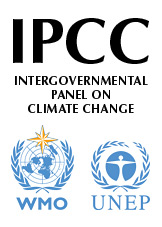 |
September 8, IPCC Fifth Assessment Review
Work has recently begun on the 5th Assessment Report (AR5) of the Intergovernmental Panel on Climate Change, which will be published in 2013/14. Below is a short summary of developments that may be of specific interest to the cryospheric research community.
At the end of last year the structure and outline of the AR5 were approved by the IPCC Plenary. Cryospheric topics where given a high profile in several chapters in WG1 (The Physical Science Basis) and WG2 (Impacts, Adaptation and Vulnerability).
|
 |
September 7, Medvedev to hold talks with Norwegian PM in Russia's Murmansk
Russian President Dmitry Medvedev will hold talks with Norwegian Prime Minister Jens Stoltenberg in Russia's northern city of Murmansk on September 15, the Kremlin said in a statement on Tuesday.
"Bilateral agreements will be signed in the presence of Russian and Norwegian heads," the statement said. Russia and Norway plan to sign an agreement on their borders in the Barents Sea. |
September 7, Melting Rate of Icecaps in Greenland and Western Antarctica Lower Than Expected
The Greenland and West Antarctic ice caps are melting at half the speed previously predicted, according to analysis of recent satellite data.
The finding is the result of research by a joint US/Dutch team from the Jet Propulsion Laboratory, Delft University of Technology (TU Delft, The Netherlands) and SRON Netherlands Institute for Space Research. The scientists have published their work in the September issue of Nature Geoscience. |
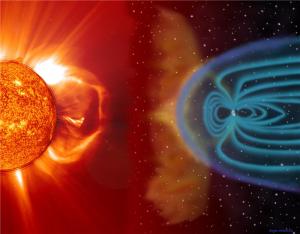 |
September 6, Navigation Satellites Contend With Stormy Sun
Just as we grow used to satellite navigation in everyday life, media reports argue that a coming surge in solar activity could render satnav devices useless, perhaps even frying satellites themselves. Is it true? No.
It is a fact that variations in the gigantic unshielded fusion reactor we call the Sun have effects that extend far out into the Solar System. And the solar activity follows a roughly 11-year 'sunspot cycle'. That means the next 'solar maximum' -- solar max for short -- is due in 2013, not long after ESA launches its first four operational Galileo satellites. |
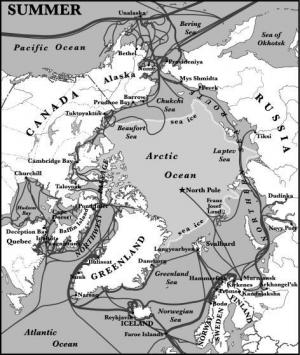 |
September 6, Global Warming's Silver Lining? Northern Countries Will Thrive and Grow, Researcher Predicts
Move over, Sunbelt. The New North is coming through, a UCLA geographer predicts in a new book.
As worldwide population increases by 40 percent over the next 40 years, sparsely populated Canada, Scandinavia, Russia and the northern United States will become formidable economic powers and migration magnets, Laurence C. Smith writes in "The World in 2050: Four Forces Shaping Civilization's Northern Future" (Dutton Books), scheduled for publication Sept. 23.
|
September 3, IPY Field School 2010 Video Available
Two months since the end of the second International and Interdisciplinary IPY Field School ended, and the video is finally available to view (we blame technical difficulties for the delay). The 23 students from 14 different countries enjoyed three fantastic weeks in Svalbard, learning about climatic and environmental change in the Arctic. You can still read all about the students adventures and meet the participants. More information about the field school, which will be running for its third year in summer 2011.
|
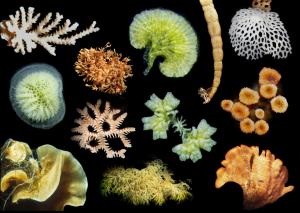 |
September 2, Marine Animals Suggest Evidence for a Trans-Antarctic Seaway
A tiny marine filter-feeder, that anchors itself to the sea bed, offers new clues to scientists studying the stability of the West Antarctic Ice Sheet -- a region that is thought to be vulnerable to collapse.
|
September 2, Operation IceBridge Ensures Optimal Data Transmission to Researchers
Operation IceBridge, NASA’s airborne mission to observe changes in polar land and sea ice, will embark on a fourth field season in October. Over the course of 2009, 41 flights were carried out over a distance of roughly 230 000km. Working with the National Snow and Ice Data Center (NSIDC) at the University of Colorado at Boulder, NASA aims to bring data from the aircraft and instruments to researchers' computers as fast as possible.
|
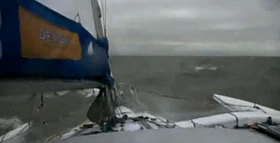 |
September 1, Polar explorer finds ice-free North Pole
Norwegian explorer Borge Ousland has been able to sail his 31 feet sailboat through the Northeast Passage without any significant problems with ice.
Ousland, who about two months ago set out from Oslo with a mission to sail through both the Northeast Passage and the Northwest Passage in one summer, has hardly experienced any problems with ice, the explorer told NRK. |
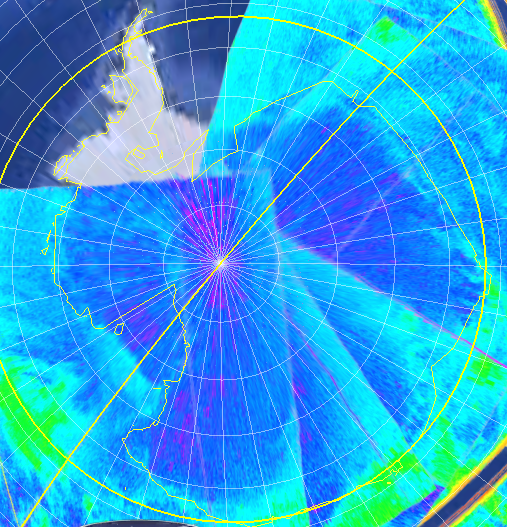 |
September 1, Techno-Archaeology Rescues Climate Data from Early Satellites
NSIDC and NASA data scientists proved the use of 21st-century techniques to revive data from 1960s satellites.
Scientists today who study polar sea ice conditions rely on satellite records reaching back to 1979. But soon, data scientists hope to extend the look back by another decade or more. Researchers at NSIDC and NASA have shown that the oldest Earth observing satellite data can be made to yield new information, adding significantly to the view of Earth's climate history.
|